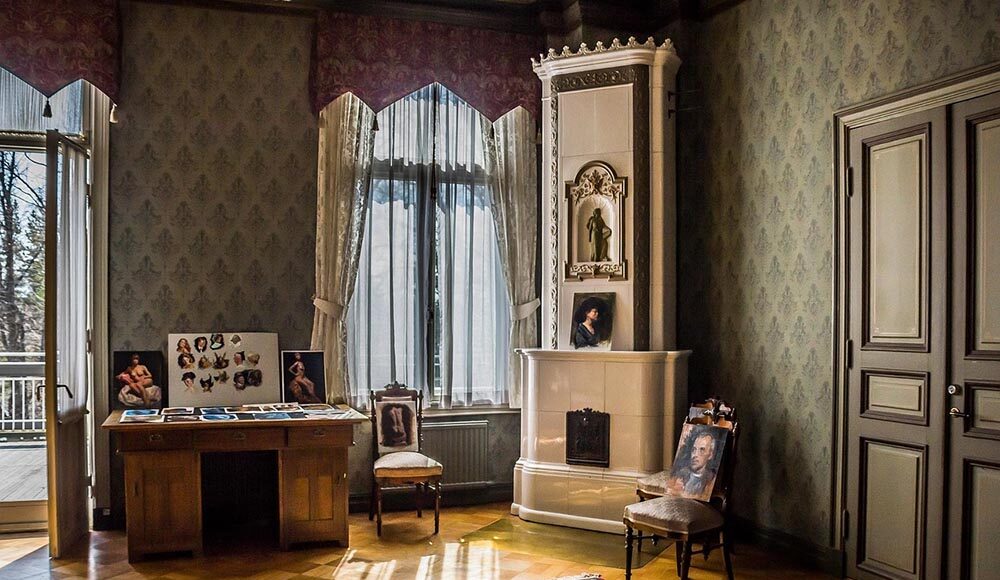For years, fashion and design have flirted with each other, but recently, the relationship has turned into a full-blown collaboration.
From style glass stools to vintage Danish chairs, furniture has moved from living rooms to runways, blurring the line between fashion set design and collectible design itself. What used to be a neutral background is now part of the story: a visual code that tells as much about the brand’s identity as the clothes themselves.
In recent seasons, luxury furniture brands have found their way into fashion week venues, lending iconic pieces to runways and presentations. This crossover reflects a shared language between fashion and design; one built on craftsmanship, material innovation, and pursuit of timeless form. Here’s a closer look at the shows that made interior design an inseparable part of the catwalk experience.
The Murano Glass Revolution on the Runway
In Milan, during a Spring/Summer 2026 showcase, guests weren’t seated on ordinary benches. Instead, they were welcomed by luminous stools made entirely of Murano glass, crafted by a Milan-based design studio. Each stool was hand-blown and CNC-polished, crafted in a palette of translucent tones that reflected light like liquid color.
More than a seating choice, this was a statement: design is not an accessory to fashion, it’s its mirror. The stools reflected artisanal precision and innovation, showing that the designer’s identity extends beyond garments into the world of collectible design. The pieces are now part of the conversation about sustainable luxury and the rise of handmade, limited-edition objects.
400 Chairs for the Spring/Summer 2023 Collection
Before the Murano collection, a previous design collaboration had already shaken up the scene. For the Spring/Summer 2023 show, the Italian maison invited visionary architect to design the runway set. The result? Over 400 unique chairs, each hand-cast in colored resin, titled Come Stai? (meaning How Are You?).
Each seat was slightly different, a metaphor for individuality and diversity. After the show, the chairs were exhibited and later sold as collectible art pieces. The gesture underlined a deeper truth: today, design is not just a background prop for fashion; it’s a cultural statement with economic and emotional value. As Pesce himself said: “A chair is not just an object; it’s a conversation with whoever sits on it.”
The Furniture You Can Wear
If one designer turned furniture into a collectible, another transformed it into clothing. In a now-legendary runway show (Autumn/Winter 2000), everyday mid-century furniture was reimagined as wearable pieces. Models walked around a minimalist living room set, sitting on retro chairs before disassembling them and wearing the parts as garments. A round wooden table unfolded into a skirt. The scene was surreal yet moving, a reflection on displacement, migration, and the meaning of “home.”
More than twenty years later, that show remains one of the most cited examples of how fashion and design can merge conceptually, not just visually. Chalayan’s vision predated the modern obsession with multifunctional living, making him one of the earliest interpreters of design as storytelling.
Apartment of Dreams
During London Fashion Week 2015, designer decided to transform his runway into a fully furnished vintage apartment. Think mid-century Scandinavian chairs, lounge seats, and a sofa arranged like an editorial from a 1960s interiors magazine.
The audience didn’t just watch a show, they entered a story. The furniture created an atmosphere of intimacy and nostalgia, amplifying the delicate, cinematic mood of clothes. In doing so, it demonstrated how interior design can frame a fashion narrative, giving context and emotional depth to the garments.
The Architecture of Emotion
No brand merges design and fashion quite. For the Fall/Winter 2015 menswear show, the brand commissioned (the research arm of Rem Koolhaas’s architectural studio OMA) to design a spatial experience rather than a simple runway. The result, titled Infinite Palace, was a modular grid of interconnected rooms clad in faux marble and industrial mesh.
Visitors wandered through the space like characters in a film set. The few pieces of furniture (benches, tables, modular partitions) reflected the architectural rigour that defines aesthetic. It wasn’t about comfort but about emotion, perspective, and rhythm. This architectural approach to set design has since become a signature, influencing how other brands conceive their runways as immersive environments rather than linear catwalks.
Fashion and design enthusiasts constantly look for inspiration from the biggest shows around the world. From runway innovations to avant-garde furniture collaborations, staying updated helps understand trends in both industries. You can explore the latest for ideas and inspiration on Vogue or check out trends in luxury home and interior design on Elle.
Beyond the Runway: The Future of Fashion and Design
These collaborations are not marketing gimmicks but cultural statements, redefining what it means to experience a collection. Fashion houses now borrow from interior design’s sense of permanence and proportion, while furniture makers absorb fashion’s speed and storytelling. And perhaps that’s the future of luxury itself: not something you wear or sit on, but something you experience.
##





